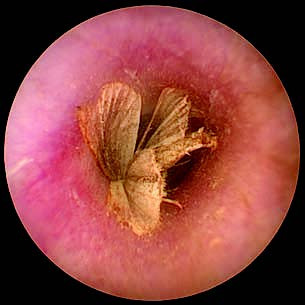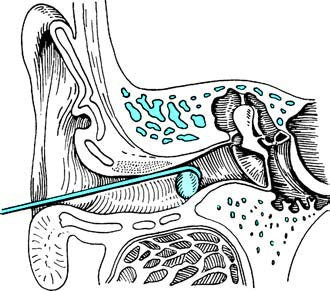Etiology
Foreign bodies in the external auditory canal are more commonly seen in children, often resulting from inserting small objects into the ear during play. In adults, foreign bodies are typically caused by objects left behind during ear cleaning or trauma, or by insects entering the canal. Foreign bodies can be classified into three categories:
- Animal-based foreign bodies (e.g., insects)
- Plant-based foreign bodies (e.g., grains, beans, small fruit seeds)
- Non-biological foreign bodies (e.g., stones, metal shavings, glass beads)
Clinical Manifestations
Small, non-irritating, non-biological foreign bodies may remain asymptomatic but can eventually lead to infection or become encased in cerumen, forming impacted cerumen. Generally, the larger the foreign body is and the closer it is to the tympanic membrane, the more pronounced the symptoms are. Animal-based foreign bodies, such as live insects, can cause crawling sensations, severe ear pain, noise in the ear, and significant distress, potentially leading to tympanic membrane damage. Plant-based foreign bodies, such as beans, may swell upon contact with water, causing ear fullness, pain, hearing loss, and secondary external otitis. Sharp or hard foreign bodies may injure the tympanic membrane. Occasionally, foreign body irritation of the external auditory canal or tympanic membrane can trigger reflexive coughing or vertigo.

Figure 1 Foreign bodies in the external auditory canal

Figure 2 Removal of foreign bodies with a hook
Treatment
The method of removal depends on the nature, shape, and location of the foreign body.
If the foreign body has not passed beyond the isthmus of the external auditory canal and is not embedded, it can be removed directly using a cerumen hook.
For live insect foreign bodies, oil, ethanol, or cotton soaked in ether or other volatile anesthetics can be instilled into the ear canal to immobilize, anesthetize, or kill the insect. The insect can then be removed with forceps or flushed out.
Hard, spherical foreign bodies such as glass beads or marbles, which are difficult to grasp, may require the use of a right-angled hook to bypass the object or a large suction tube to extract it. If the foreign body is large and tightly embedded deep in the canal, removal may require local or general anesthesia. In some cases, an incision in the ear canal or removal of part of the bony posterior wall of the external auditory canal may be necessary to facilitate extraction. For young children, foreign body removal is often performed under brief general anesthesia to prevent injury or deeper displacement due to lack of cooperation during the procedure.
If the foreign body has caused secondary infection, anti-infective treatment should be administered first, and the foreign body should be removed after the inflammation subsides. Alternatively, the foreign body can be removed first, followed by active treatment of external otitis.